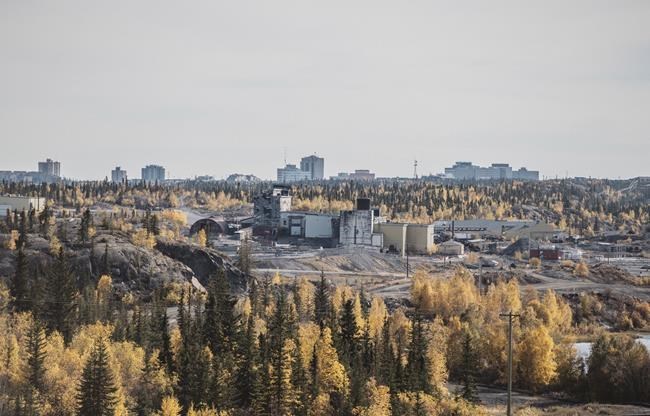YELLOWKNIFE — The federal government and Yellowknives Dene First Nation have signed a procurement framework agreement for the cleanup of Giant Mine, one of Canada's most contaminated sites.
Ottawa says the agreement confirms its commitment to increase procurement opportunities for Indigenous people through the more than $4-billion Giant Mine Remediation Project, including prioritizing contracts with Indigenous-owned businesses.
The First Nation says the deal will increase its oversight of how the project awards contracts and provides for tougher penalties for companies that fail to meet Indigenous hiring commitments.
The agreement does not address the First Nation's request for an apology and compensation for long-term cultural, social and environmental impacts from the gold mine that has been out of operation for almost two decades.
The federal government and First Nation signed three agreements in 2021, including a community benefits agreement that promised up to $20 million over 10 years to support the First Nation’s participation in the remediation project.
The 2022 federal budget earmarked $2 million to support the First Nation in their pursuit of an apology and compensation.
“The Dene people are committed to good relations with our land, water, plants, and animals," N'dilo Yellowknives Dene First Nation Chief Fred Sangris said in a statement. "The participation of Yellowknives Dene businesses in remediating the former Giant Mine site fits within these values. It offers increased opportunities for skills-building to our young people that they can take with them as they build their careers.”
The remediation project's latest annual report says it is currently missing targets for northern and Indigenous employment. Northern employees worked 49 per cent of the total 36,052 person-hours worked on the project, below the target of 55 to 70 per cent. Northern Indigenous employees accounted for 20 per cent of those hours, compared to a target of 25 to 35 per cent.
Remediation of Giant Mine began in 2021. The federal government has said employment with the project will peak in 2031, with 260 full-time jobs.
The former gold mine operated within Yellowknife city limits from 1948 to 2004, during which time it produced thousands of tonnes of highly toxic arsenic trioxide dust through the gold-roasting process. The site is on the traditional territories of the Yellowknives Dene First Nation, Tlicho, and North Slave Métis.
The federal government took responsibility for Giant Mine after its last owner, Royal Oak Mines Inc., went bankrupt.
"As we continue to work together to manage the legacy of the Giant Mine, we are committed to addressing the wrongs of the past and supporting partners in their vision for a better, more prosperous future," Minister of Northern Affairs Dan Vandal said in a statement Thursday.
The cleanup is expected to cost $4.38 billion by the time its complete in 2038, after which some aspects of the site, including 237,000 tonnes of arsenic trioxide dust stored underground in frozen chambers, will require perpetual care and maintenance. The site spans more than 900 hectares, has 13.5 tonnes of contaminated soil, a landfill, six tailing ponds and 100 buildings.
Remediation work over the next decade is to include construction of a new water treatment plant, destruction of the abandoned townsite and underground stabilization using a mixture of cement, tailings and chemical additives.
This report by The Canadian Press was first published June 22, 2023.
Emily Blake, The Canadian Press



